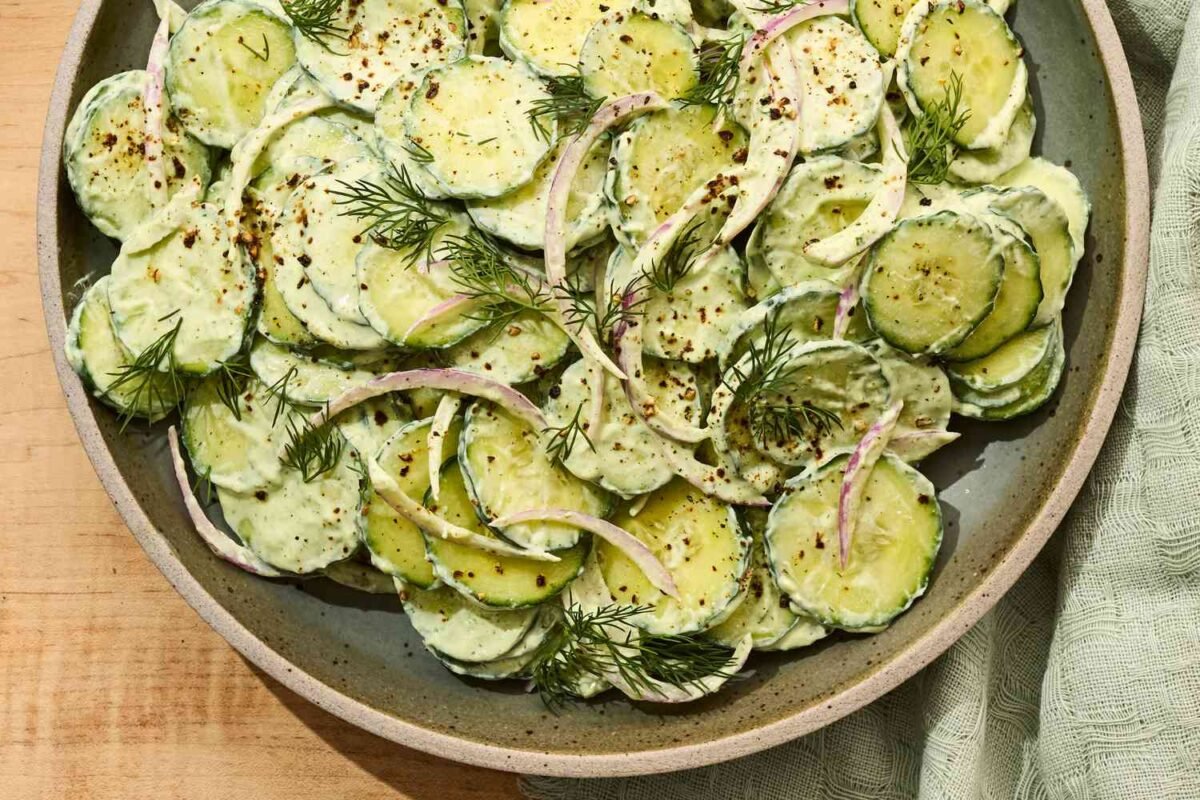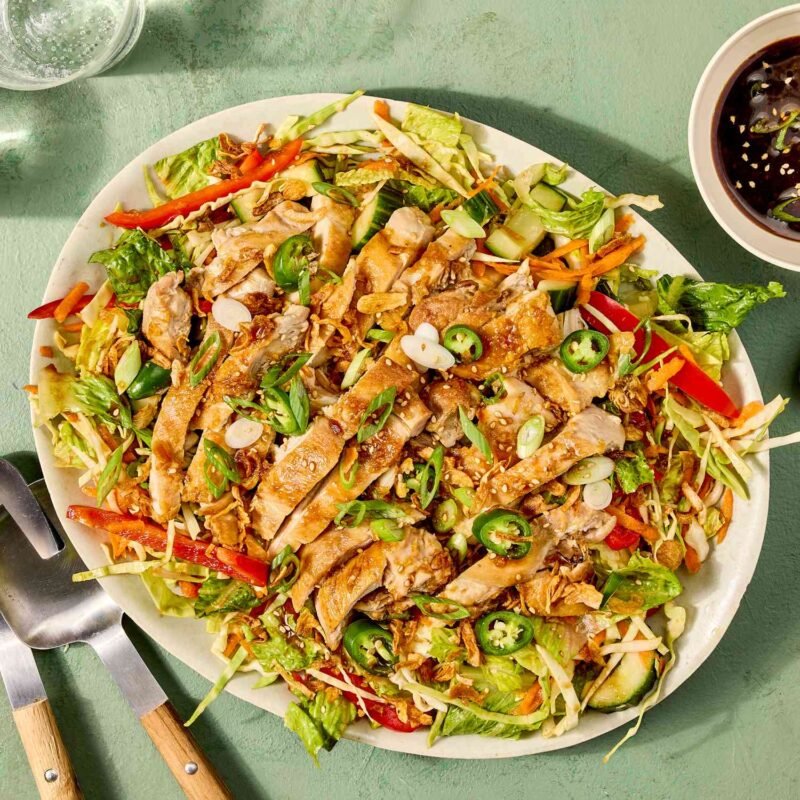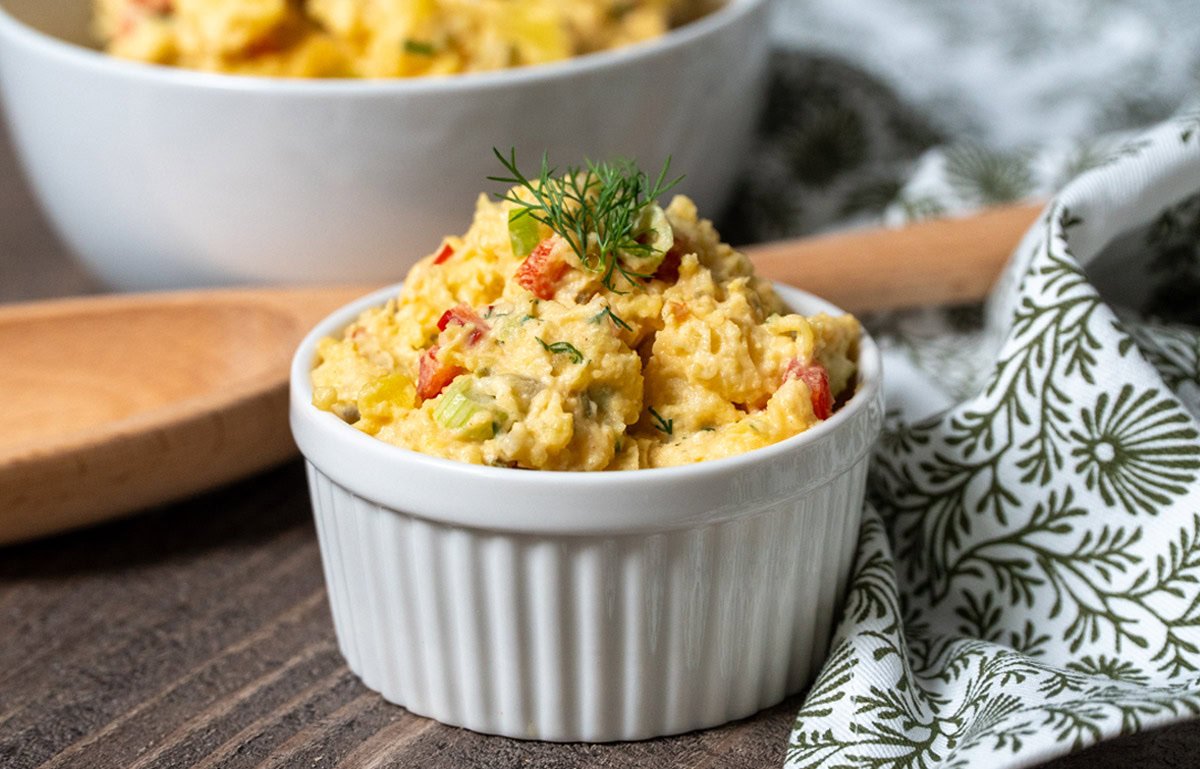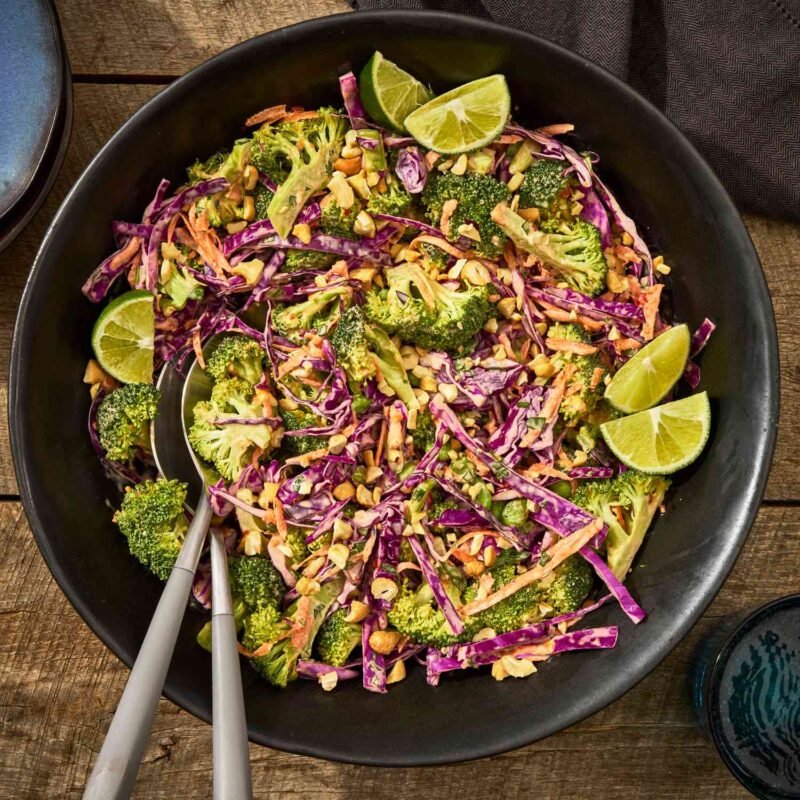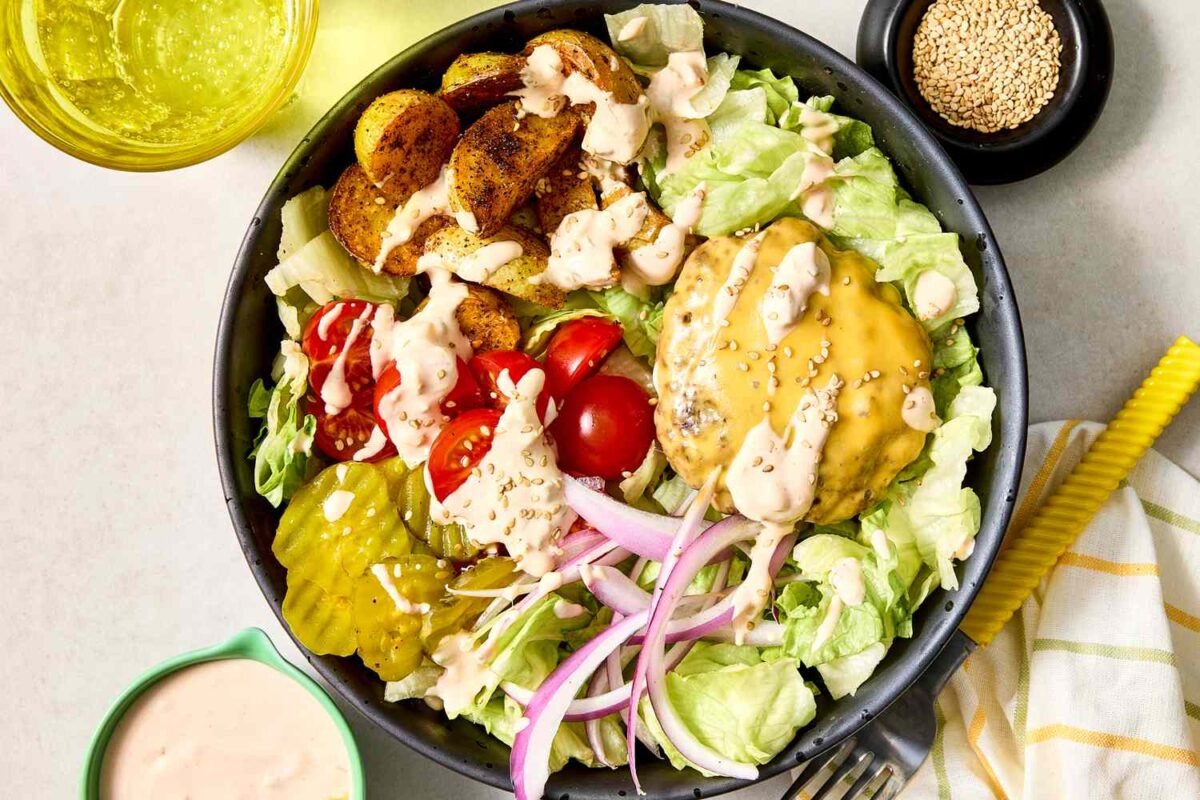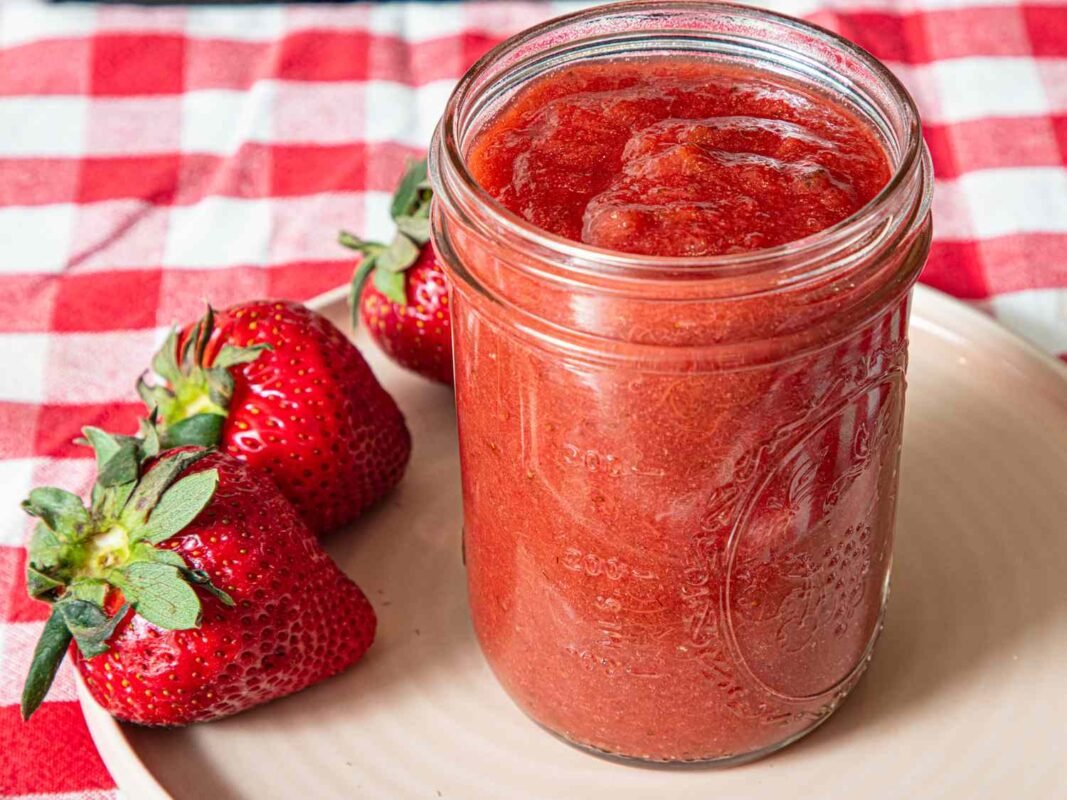Events
This Easy Salad Is Tangy, Crisp, and Totally Refreshing
Why It Works
- The flavors of different citruses are paired to form a complex, layered vinaigrette.
- Curing chayote in salt and sugar brings out its natural sweetness by removing excess water while transforming its raw jicama-like snap into a softer crisp texture.
Chayote is known as Buddha’s palm in China, a nod to its shape. Much like in its native Mexico, chayote is usually eaten cooked in China, but when served raw, it has a delightful crunch that recalls jicama, with a mild, fruity sweetness somewhere between an apple and a cucumber.
Serious Eats / Amanda Suarez
To fully coax out those characteristics, this recipe pairs chayote with thin slices of apple and a light citrus vinaigrette based on the framework of my “all-purpose” Chinese dressing. Instead of the salty and savory kick of soy sauce that my all-purpose recipe calls for, this one uses Japanese ponzu, while lemon juice stands in for the Chinese black vinegar. Korean honey-citron tea concentrate takes the place of granulated sugar, but I use twice as much of the concentrate, as it’s half as sweet as pure sugar is. I also round out the seasoning oil with some toasted sesame oil for nutty depth. It’s an example of how you can start with that basic recipe and make thoughtful (and even unexpected) changes to any component if you want to create a whole new flavor profile.
Despite all these changes, I stick to my basic ratio (by volume) of three parts salty-savory ingredient, three parts oil, one part acid, and one part sweet.
Of all the recipes I developed to demonstrate the versatility of my all-purpose Chinese-style vinaigrette, this one is certainly the least traditional. Even though I wouldn’t expect to find this in any restaurants or homes back in China, the introduction of citrus to cold dishes isn’t by any means unheard of, and you’ll find it in cucumber, noodle, or hand-pulled chicken dishes.
July 2022
This Easy Salad Is Tangy, Crisp, and Totally Refreshing
Cook Mode
(Keep screen awake)
-
1 chayote (about 12 ounces; 340 g), washed and cut into quarters lengthwise
-
Finely grated zest of 1/4 lemon (about 1 loosely packed teaspoon)
-
1 teaspoon (3 g) Diamond Crystal kosher salt; for table salt use half as much by volume or the same weight, plus more for apple slices
-
1 teaspoon (3 g) granulated sugar
-
1/4 of a large (7-ounce; 210 g) sweet-crisp apple, such as Fuji
-
2 tablespoons (30 ml) ponzu
-
1 tablespoon (15 ml) Japanese light (usukuchi) soy sauce
-
2 tablespoons (30 g) seasoning oil from the Chinese all-purpose vinaigrette recipe
-
1 tablespoon (15 ml) fresh lemon juice
-
2 tablespoons (40 g) yujacha (Korean honey-citron tea concentrate; see note)
-
1 tablespoon (15 ml) toasted sesame oil
-
1/4 cup loosely packed red shiso leaves, torn into small pieces
-
Using a mandoline or a sharp knife, slice the chayote quarters into the thinnest lengthwise slices you can. In a small bowl, massage the chayote slices with lemon zest, kosher salt, and sugar until evenly coated. Let stand at room temperature for at least 1 hour, or up to 8 hours in the refrigerator. Drain the accumulated liquid and discard.
Serious Eats / Amanda Suarez
-
Using a mandoline or sharp knife, slice the apple quarter into similarly thin lengthwise slices. Transfer to a bowl of lightly salted water (1/2 teaspoon of kosher salt per cup of water) to prevent browning.
Serious Eats / Amanda Suarez
-
To make the vinaigrette, in a small bowl, whisk together ponzu, soy sauce, seasoning oil, lemon juice, honey citron tea concentrate, and sesame oil until combined (it won’t emulsify, that’s okay).
Serious Eats / Amanda Suarez
-
When ready to serve, toss chayote, apple slices, and red shiso together. Add dressing 1 tablespoon at a time until sufficiently seasoned, about 4 tablespoons. Serve cold.
Serious Eats / Amanda Suarez
Special Equipment
Mandoline slicer or sharp knife
Notes
Red shiso is my preferred herb in this salad, but basil, parsley, and cilantro would all work well.
Korean honey-citron tea, a syrupy concentrate, can be found at most Korean grocery stores. Regular honey is also a good substitute.
Make-Ahead and Storage
The vinaigrette can be refrigerated in an airtight container for up to 1 week.


